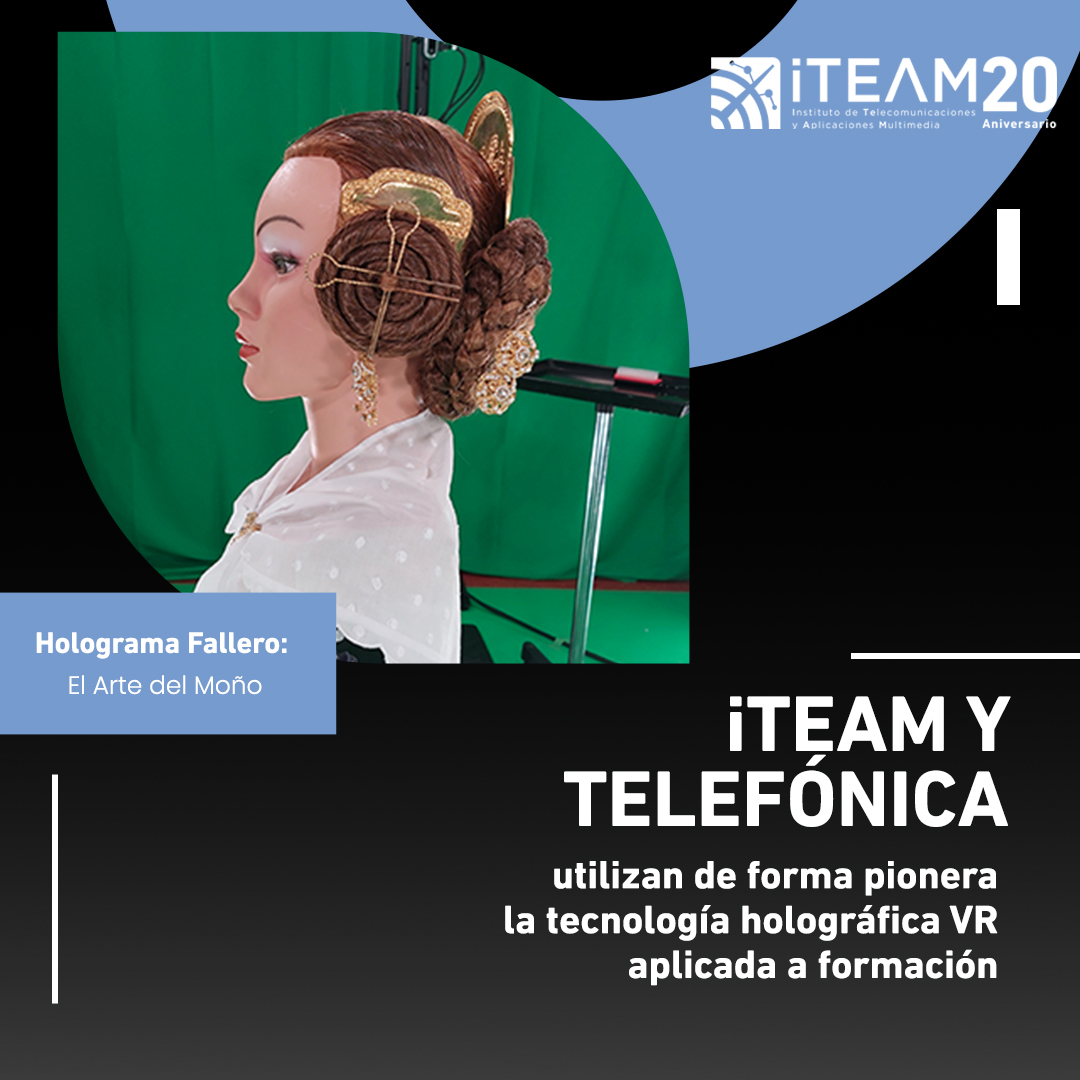- The first use case developed is called “Holograma Fallero: El Arte del Moño,” where users can follow a guided tutorial with experts in Valencian hairstyling using Virtual Reality glasses.
- UPV and Telefónica continue working on the use of 5G, which will enable more use cases for various training programs.
The Institute of Telecommunications and Multimedia Applications (iTEAM) of the Universitat Politècnica de València (UPV) and Telefónica present an innovative use case of holographic capture applied to training. Within the framework of a national project in which Telefónica and UPV collaborate, they have recently launched an immersive communications laboratory at the university, which was presented last December. This lab is pioneering the development of experiences using holographic technology based on 5G communications, including the 26 GHz millimeter-wave band.
The first use case developed in this laboratory by Telefónica and UPV is called “Holograma Fallero: El Arte del Moño”. It consists of a virtual reality (VR) experience where users, using VR glasses, can follow a guided tutorial by experts in Valencian hairstyling. This experience offers a detailed view of the process of creating the traditional fallera hairstyle, allowing users to follow the process in a completely innovative way, remotely and with the support of tutors.
As part of this project, Telefónica has deployed a volumetric video capture set at UPV consisting of 13 Intel Realsense D455 cameras and a software solution from the American company Evercoast. These tools enable synchronized capture and video processing to generate high-quality 3D content in real-time.
Additionally, Telefónica is working on optimizing the 5G private network at UPV. This network will provide the necessary performance for real-time transmission of volumetric video, enabling more use cases for various training programs.
The consumption of volumetric video represents a new way of interacting with content, allowing users to view it from any angle, as if they were physically present. This type of content, especially when used with VR glasses as in the case of the ‘Holograma Fallero,’ offers a unique immersive experience. However, the consumption of volumetric video also presents a technical challenge due to its high data rate and real-time processing requirements, testing both hardware and network capabilities.
This is the first training application using holography, marking an initial step towards further research developments and new use cases.
The launch of the laboratory and this initiative is part of the “Advancing-5G-Immersive” and “Advancing-5G-Digital Twins” projects under the UNICO I+D 5G plan, funded by the Ministry for Digital Transformation and Public Function of Spain with NextGenEU funds from the European Commission.

